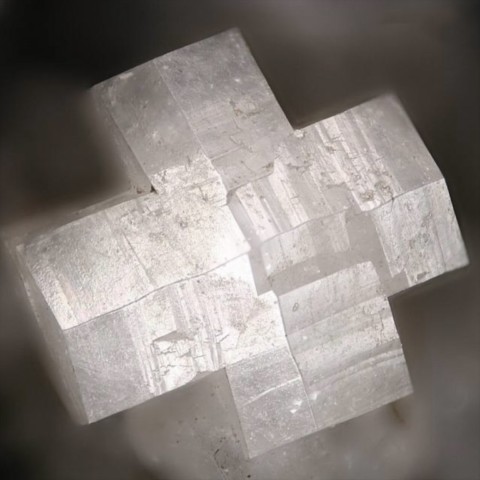HARMOTOME
Class : Silicates
Subclass : Tectosilicates
Crystal system : Monoclinic
Chemistry : BaAl2Si6O16 6H2O
Rarity : Quite common
The harmotome belongs to the group of zeolites. It is a barium zeolite especially present in hydrothermal barite veins, often with brewsterite, more rarely in geodes of volcanic rocks (basalts, phonolites and trachytes). Its name comes from the Greek harmos (assembly) and temnein (to cut) to emphasize the fact that its crystals are often twinned, separated by grooves and can separate easily. Its morphology is close to that of phillipsite, forming constantly twinned prismatic crystals, assembled into complex buildings with an orthorhombic or tetragonal appearance. Sometimes the crystals are grouped in clumps or radiated spherolites. The harmotome is colorless or white, sometimes tinged with reddish or brownish.
Main photo : Harmotome from Thomaston, Connecticut, USA © Harold Moritz
Harmotome in the World
Twinning
Twins are common and repeated on {001}, {021} and {110}, which can form crosses and grooved crystals.
Fakes and treatments
No fakes recorded for this mineral species.
Hardness : 4 to 5
Density : 2.41 to 2.47
Fracture : Irregular to sub-conchoidal
Streak : White
TP : Translucent to transparent
RI : 1.503 to 1.514
Birefringence : 0.005 to 0.006
Optical character : Biaxial +
Pleochroism : None
Fluorescence : None
Solubility : Hydrochloric acid
Magnetism : NoneRadioactivity : None





